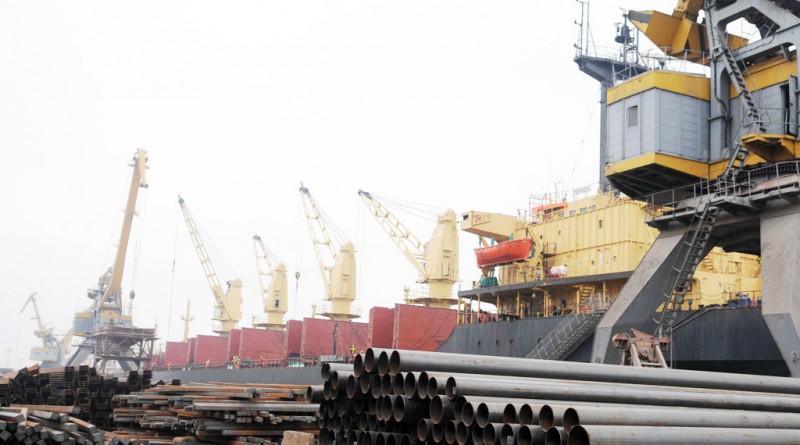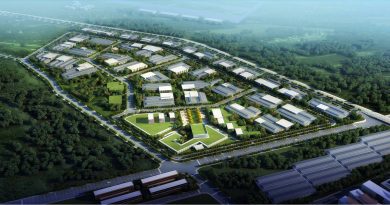Duties imposed on imported steel
The Ministry of Industry and Trade (MoIT) yesterday decided to impose additional tariffs on imported steel products as an official safeguard measure against cheap imports that were allegedly threatening the domestic industry.
Previously, on March 22 this year, the ministry imposed provisional safeguard duties of 23.3 per cent on steel ingots and 14.2 per cent on steel rods for a maximum of 200 days.
Under the new decision, which will take effect from early next month and last for four years, the safeguard duties will be imposed on alloy and non-alloy steel ingots and steel rods. The steel products are coded 7207.11.00; 7207.19.00; 7202.20.99; 7224.90.00; 7213.10.00; 7213.91.20; 7214.20.31; 7214.20.41; 7227.90.00; 7228.30.10; 9811.00.00.
According to the new regulation, a duty of 23.3 per cent will be imposed on steel ingots until March 21, 2017. The rate then will be reduced to 21.3 per cent,19.3 per cent and 17.3 per cent over the following three years.
As for steel rods, the safeguard duty will be 14.2 per cent until August 1, 2016 and then be increased to 15.4 per cent until March 21, 2017. The rate then will be reduced to 13.9 per cent, 12.4 per cent and 10.9 per cent over the following three years.
From March 22, 2020, the duties on both steel ingots and steel rods will be zero per cent if no extension is made.
However, these safeguards will not be applicable on products from developing and under-developed countries, whose steel exports to Việt Nam account for less than 3 per cent of the country’s total imports.
The duty measure was imposed after the MoIT conducted a safeguard investigation into imports of steel ingots and steel rods in the wake of complaints lodged by local producers Hòa Phát Steel Joint Stock Company (JSC), Southern Steel Co Ltd, Thái Nguyên Iron and Steel JSC and Việt Nam-Italy Steel JSC.
The four companies said the proposal for investigations came from a surge of imported steel ingots and steel rods.
Specifically, the amount of imported steel ingots rose from more than 466,000 tonnes in 2012 to 1.5 million tonnes in 2015. The amount of imported steel rods also rose from more than 387,000 tonnes in 2012 to 1.2 million tonnes in 2015.
Many others, however, called for a halt to the investigation as unlike big companies they depended on imported steel ingots for production, and high duties would increase their input costs and lowering profit margin.
Việt Nam has already been imposing trade tariffs of up to 20 per cent on these products.
VSA forecasts decline in steel demand
The Việt Nam Steel Association (VSA) has forecast a downward trend for steel demand in the next two or three months despite strong consumption and production of the commodity in the beginning of the year.
The downward trend started in June with a 6.6 per cent month-on-month decrease in the production output of steel enterprises and a 12 per cent plunge in consumption volume compared with the previous month’s figures.
Compared with the same period last year, the production output in June reached 1.5 million tonnes, representing a surge of 19.7 per cent, and there was a modest increase in consumption of 2.4 per cent.
According to VSA, the volume of steel produced for construction reached 680,000 tonnes in June, rising 16 per cent year-on-year, but sales went down strongly by 9 per cent to 484,000 tonnes.
VSA deputy chairman Nguyễn Văn Sưa said that the fall in demand was partly a seasonal factor. Another reason was that traders did not want to stockpile to mitigate risks caused by quick fall in prices.
The fall in prices was foreseeable, Sưa said, adding that it was a result of fierce competition for market share among traders and the supply glut in both the local and global markets.
In June, prices of steel materials declined by US$15-20 per tonne while finished steel products decreased strongly by between VNĐ800,000 ($36) and VNĐ1 million per tonne.
Sưa said to protect local steel producers, Việt Nam had taken some measures, such as trade defence or anti-dumping lawsuits, but they were only short-term solutions.
Amidst the stiff competition with steel imports and the decrease in steel demand, local steel producers needed to improve the quality of their goods and save on production costs to maintain their market share
Source: VNS









